Scandinavian design effortlessly combines beauty and functionality, mirroring a culture that emphatically values simplicity, efficiency, and a connection between the indoor and outdoor environment. Sprawling endlessly from Nordic roots, this uniquely minimalist approach to design radiates an undemanding beauty that is both contemporary and timeless, marrying functionality, light, and the simplicity of raw materials to transform mundane spaces into aesthetic masterpieces. At the heart of Scandinavian design lies the kitchen, the soul of a home, where the magic of shared meals, stories, and connections take form. Let us embark on a journey to unpack the quintessential elements of Scandinavian kitchen design, delve into the role of furniture and layout in constructing a harmonious environment, and illuminate the key trends that bring out the warmth and affinity for embellishments that underpin this revered style.
Essential Elements of Scandinavian Kitchen Design
Functionality in Scandinavian Kitchen Design
Scandinavian kitchen design fully embraces functionality as one of its key principles. This design philosophy stems from the Nordic culture’s appreciation for simplicity and practicality. Therefore, every aspect of a Scandinavian kitchen, from the layout to the appliances and storage solutions, is focused on promoting efficient use of space. To achieve this, Scandinavian kitchens typically feature an open plan concept that encourages flow and movement. The use of multi-function furniture and appliances is also common, promoting minimal clutter and maximum utility. Everything in a Scandinavian kitchen has a clear purpose, and clutter is minimized with smart storage solutions like sleek cabinets and open shelving units.
Minimalism and Neutral Colors
The principle of minimalism is another defining feature of Scandinavian kitchen design. The minimalistic approach revolves around creating a clean and uncluttered space that exudes calm and tranquility. To achieve this, Scandinavian kitchens incorporate clean lines, sleek surfaces, and a lack of ornate details. The color palette in Scandinavian kitchens primarily revolves around neutral and calm shades. White is the most common color, providing a bright and airy feel. This is frequently contrasted with shades of grey, black, or navy, which add depth and sophistication. Pops of color may be introduced through accessories, but they are typically muted to ensure the overall aesthetic remains harmonious and understated.
Natural Light and Organic Materials
The incorporation of natural light is another key element of Scandinavian kitchen design. Scandinavians greatly value natural light, largely due to the Nordic region’s long, dark winters. Therefore, plenty of large windows are typically incorporated into the design of a Scandinavian kitchen. These invite a flood of natural light into the space, making it bright and welcoming. Additionally, to echo the outdoor environment, Scandinavian kitchens often utilize organic materials. Wood, particularly light varieties such as pine, oak, and ash, is commonly used for cabinetry, flooring, and countertops. In Scandinavian design, the natural beauty of these materials is allowed to shine through, with little embellishment or staining.
The significance of Hygge in Scandinavian Kitchen Design
Central to Scandinavian kitchen design is the Danish principle of “hygge” (pronounced “hoo-gah”), which espouses the promotion of comfort, cosiness, and wellbeing. The aim is to fashion an inviting and domestic surrounding that motivates one to unwind, relishing in the simplicity of life’s luxuries. In creating this sensation in a Scandinavian kitchen, the infusion of soft textures and inviting materials – such as woven throws, comfy rugs, and components made of wood – become crucial. Attention to minute detailing like lighting fixtures, those that provide a warm and inviting luminescence, also contribute significantly to this nurturing ambience. Regardless of its minimalistic design and purposeful usage, Scandinavian kitchens always radiate a sense of warmth and friendliness, encouraging individuals not just to cook, but to gather, eat, and cultivate social bonds.

The role of Furniture in a Scandinavian Kitchen
The Elegance of Tables in Scandinavian Kitchen Design
A key furniture piece in any Scandinavian kitchen is a sleek, minimalistic table. With simplicity at the core of their design, these tables are traditionally curated from high-grade materials like teak or pine. They emphasize usefulness over extravagance, often stretching out to welcome larger gatherings or folding in to preserve space when not in use. The tables are usually finished in colors that align with the overall color scheme of the Scandinavian kitchen, staying within shades of white, gray, and blue. The charm of these tables, however, lies in their lack of unnecessary embellishments, seamlessly aligning with the ‘Less is More’ philosophy that underpins Scandinavian design.
Stools and Their Role
Intrinsic to the Scandinavian kitchen are stools, often paired with tables or kitchen islands. These stools are typically made from the same quality materials as the tables, providing a sense of uniformity and coherence in the design. High stools with a pared-back aesthetic offer casual seating while adding to the overall streamlined design. They are often painted in white or left in their natural wood state but, whatever the treatment, they always adhere to the ethos of simplicity and functionality that is so critical to Scandinavian kitchen design.
Importance of Cabinetry
Cabinetry in a Scandinavian kitchen holds significant importance, providing an abundance of storage while maintaining the minimalist aesthetic. Cabinets are often floor-to-ceiling, providing considerable storage without cluttering up the kitchen space, and seamlessly merging into the walls. The doors are typically designed without protruding handles or knobs, keeping the front surface as smooth and unbroken as possible. The color palette is kept light and neutral, often incorporating white, beige, or pale wood tones — all in the spirit of a clean and tranquil atmosphere.
Distinctive Scandinavian Characteristics: Clean Lines and Muted Colors
The overarching characteristics of Scandinavian kitchen furniture revolve around clean lines and muted color palettes. Every piece, from the kitchen island to the pantry cabinets, is defined by straight, clean lines. The simplicity of linear design contributes to the overall visual quietness, functional form, and uncluttered appearance. As for the colour palette, it leans heavily towards the cooler, softer hues — whites, grays, and blues — reflecting the desire for light in the traditionally long, dark Nordic winters and also promoting a sense of tranquillity and peace.
Scandinavian kitchen design is a study in the harmonious blending of form and function. Each piece of furniture, from the clear, ample countertops to multifunctional tables and streamlined stools, plays an integral role in creating an understated, serene, and illuminated workspace. These well-chosen items don’t just provide visual appeal, but also support fluid movement and efficient meal preparation.
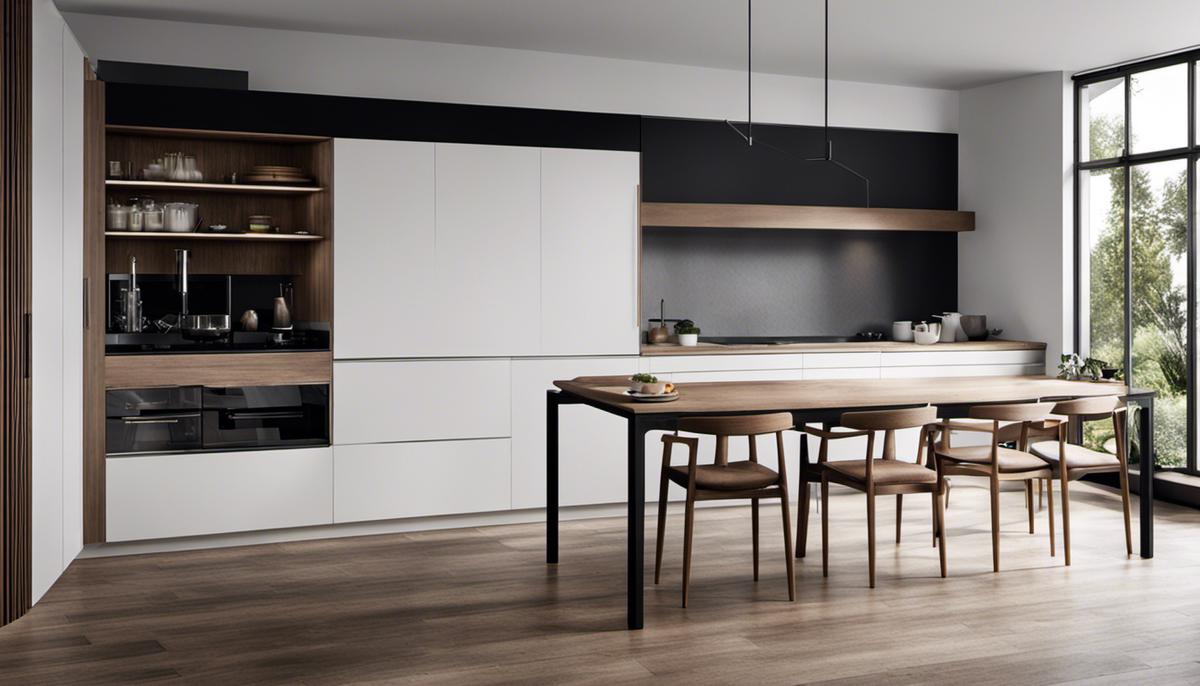
Practical Layout Options for Scandinavian Kitchens
Key Elements of Scandinavian Kitchen Design
Three fundamental principles underpin Scandinavian kitchen design: minimalism, simplicity, and functionality. These concepts are reflected in the design’s clever and practical use of space, with every feature having a defined purpose. Characteristics of this design theme includes open shelving, clean lines, and a palette dominated by light, neutral colors. Together, these components create a calming and organized culinary space.
Open Floor Plan
In the Scandinavian design approach, open floor plans are a common choice. They are perfect for creating a social and welcoming atmosphere. This layout allows for increased natural light and fosters a sense of spaciousness, even in smaller kitchens. An open floor plan combines the kitchen, dining and living areas into one free-flowing space, making it ideal for entertaining and family gatherings. The practicality of this design rests in its flexibility. By eliminating barriers, the space can be configured and used in a multitude of ways, accommodating a busy family or a solitary cook with equal ease.
Galley-Style Kitchen
A galley-style kitchen follows a narrow and elongated design with counters and appliances arranged on two opposing sides. Galley kitchens are favored in Scandinavian design for their efficiency. This layout takes full advantage of vertical space with tall cabinets and open shelving, allowing for ample storage without consuming much floor space. Despite their compact nature, galley kitchens can feel spacious and functional when they follow the light and minimalist aesthetic of Scandinavian design.
U-Shaped and L-Shaped Kitchens
U-shaped and L-shaped kitchens are popular in Scandinavian designs where space permits. Both styles provide the chef with easy access to all appliances and work areas, maximizing functionality. U-shaped kitchens offer ample counter space and storage, often incorporating an island in the center for additional workspace or seating.
In an L-shaped kitchen, the emphasis is on creating an uncluttered and streamlined space that’s easy to work in. The L-shape allows for the efficient grouping of sink, refrigerator, and stove, enhancing work flow. This layout often leaves a sufficient amount of floor space that can be allocated for a dining area or a small lounge space.
The Importance of Space Usage in Scandinavian Kitchen Design
In Scandinavian kitchen design, understanding and utilizing space, regardless of layout, is paramount. However, it’s not primarily about the physical size of the room, but rather how that space is exploited to its full potential. Striking the ideal balance between beautiful aesthetics and functional usage is a determining factor. Creative storage solutions are often integral to these kitchens, with designs built around the concept of reducing unnecessary clutter. This could encompass features such as corner cabinets, overhead shelving or pull out pantries.
These kitchen designs also utilize natural light to an extent that the space feels bigger and brighter. This is achieved through the strategic placement of windows and reflective surfaces. Furthermore, heavy window treatments are usually avoided, allowing natural light to illuminate the area, enhancing its practicality and visual charm.
In essence, a meticulously designed Scandinavian kitchen uses a combination of innovative layout, natural light and the efficient use of space to significantly improve overall functionality, creating an enjoyable environment for cooking, eating, and socializing.
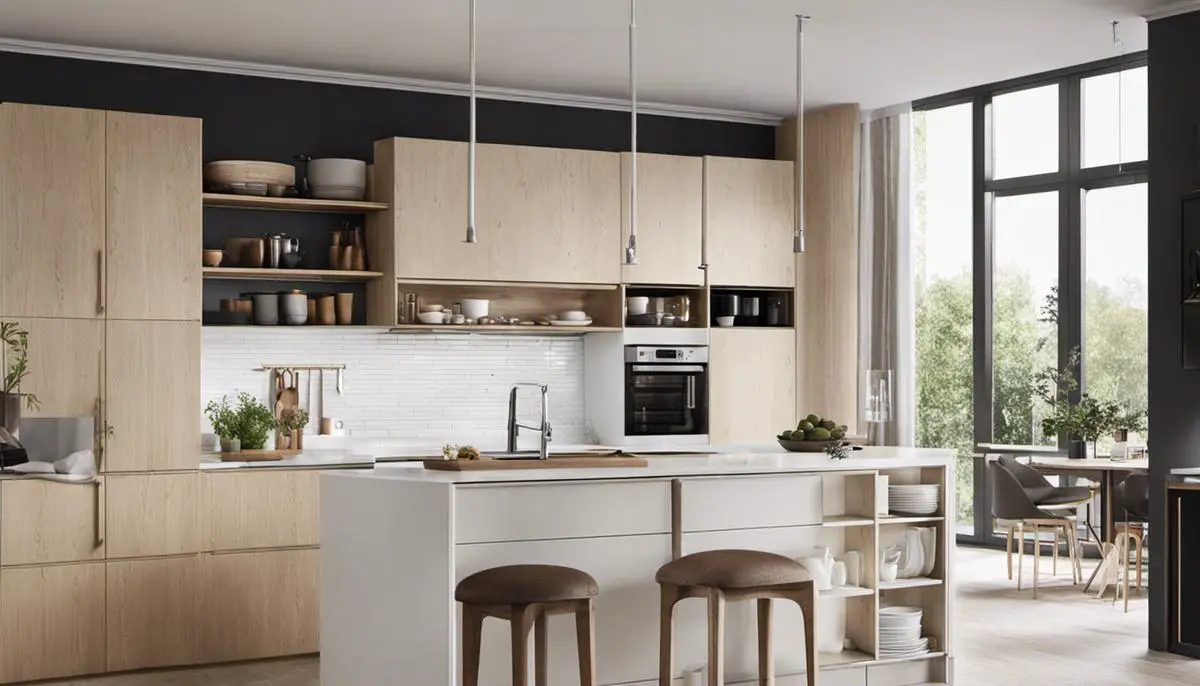
Decorative Accessories & Lighting in a Scandinavian Kitchen
Embracing Minimalism in Scandinavian Kitchen Design and Decor
Embodying a minimalist approach is a definitive characteristic of Scandinavian kitchen design. However, this does not imply that the spaces are or feel impersonal or cold. In fact, with carefully considered design choices, they can project a welcoming and sophisticated ambiance. The decorative elements for such a kitchen are deliberately selected keeping in mind the ‘less is more’ philosophy while also allowing for a distinct style and charm. In most designs, you can witness the prevalent use of stainless steel accents, furniture with clean lines, and polished wooden elements, all helping to build the fresh, clean and comforting atmosphere characteristic of a Scandinavian kitchen.
High-Quality Kitchenware As Decorations
In a Scandinavian kitchen, functionality does not have to succumb to style; they can coincide harmoniously. High-quality kitchenware such as pots, pans, bowls, cups, and cutlery, when chosen with care, can serve as both practical tools for cooking and attractive accessories to add to the rustic charm or modern edge of the space. The sparsely set counters can host a copper French press or enameled cast iron pots, adding attention-grabbing contrasts.
The Role of Greenery in Scandinavian Kitchen Design
The presence of greenery in Scandinavian kitchen design is another subtle but significant decorative inclusion. Indoor plants, herbs, and even fruit baskets add a vibrant freshness to the otherwise muted color palette. Aside from their aesthetic appeal, they also contribute to cleaner air in the kitchen and serve as a homely, earthy touch to the overall design.
Importance of Natural Light and Unobtrusive Artificial Lighting
Scandinavian design strongly emphasizes the importance of natural light, believing in its ability to uplift the ambiance, emphasizing open spaces and tranquility. Large windows without heavy curtains are common features of these kitchens, contributing to the sense of openness and the blurring of lines between the interior and exterior. Artificial lighting plays a supplementary role, aimed to mimic the natural light as closely as possible. It often takes the form of recessed lighting or simple pendants, ensuring not to draw attention away from the beauty of the kitchen’s natural simplicity.
Emphasizing Functionality Through Lighting and Decorative Accessories
In maintaining a minimalist style, the functionality of every element, including lighting and decorative accessories, is paramount. Everything in a Scandinavian kitchen has a purpose. Lighting accents are placed strategically not just to illuminate the room but also to highlight architectural or design elements. Decorative accessories, while contributing to the aesthetics, also serve practical utilities.
Unobtrusive Design Elements
A common trait in Scandinavian kitchen design is the unobtrusiveness of decorative elements. Unlike other design aesthetics that use accessories to make a statement, Scandinavian design uses them to blend seamlessly into the overall zen-inspired minimalism. The look is understated, yet beautiful: simple geometric shapes in brilliant white, geometric patterns, and objects with practical uses, such as a sleek clock or an unadorned chalkboard for messages and reminders.
Introduction to Scandinavian Kitchen Design
When exploring Scandinavian kitchen design, one finds a stellar combination of aesthetics and functionality. The kitchen space is transformed by using high-quality kitchenware as decorative pieces, while touches of greenery from indoor plants and herbs inject vitality. Lighting is strategically placed to enhance the functionality of the area. The end result intertwines modern and rustic elements to produce a kitchen space that is minimalist, yet warm and inviting.
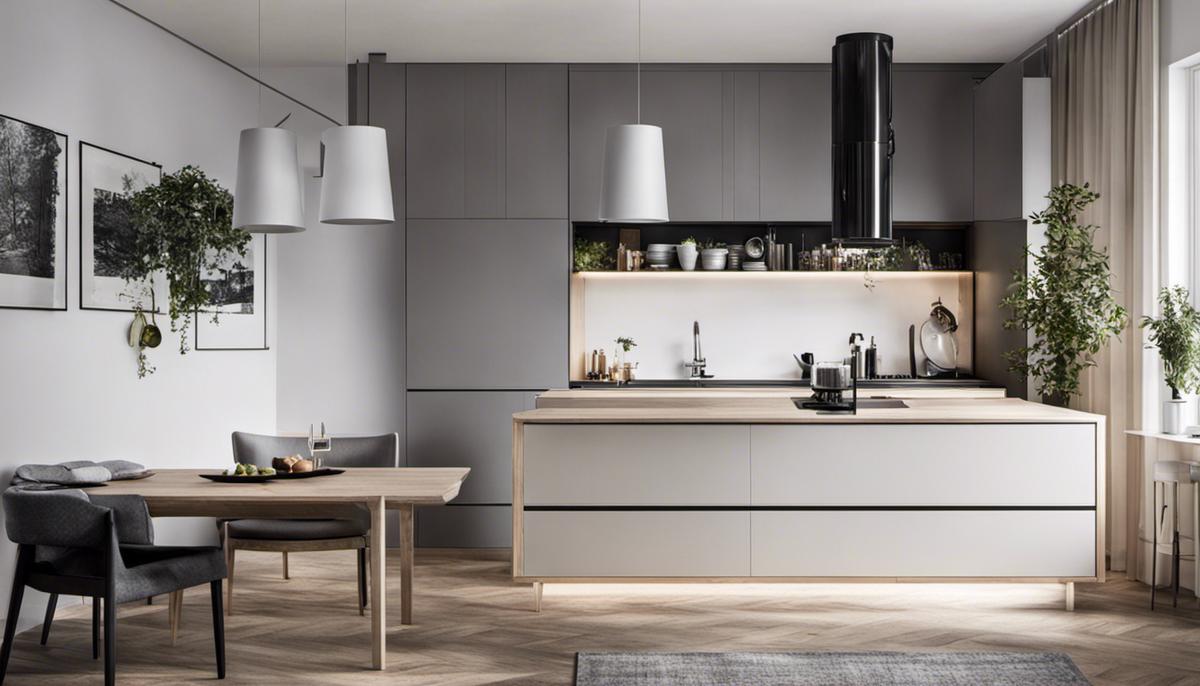
Modern Scandinavian Kitchen: Trending Styles and Features
Characterizing Scandinavian Kitchen Design
In essence, Scandinavian kitchen design is marked by its simplicity, practicality, and incorporation of natural materials. Rooted in the Nordic countries – Denmark, Finland, Iceland, Norway, and Sweden- this design aesthetic aims to create an organic blend of form, function, and environmental harmonization. A Scandinavian kitchen is fundamentally designed to be a functional, user-friendly space, but it is also intended to offer an aesthetically pleasing and mellow environment for its users.
Modern Trends in Scandinavian Kitchen Design
With the modern wave of Scandinavian interior design, there has been a shift towards introducing innovative materials and cutting-edge technology into the kitchen space. The latest trends show a seamless integration of smart appliances and versatile solutions for space conservation without compromising the signature minimalist aesthetic that defines Scandinavian design. Examples include built-in induction stoves, smart refrigerators that can monitor food freshness, and ceiling-mounted extractor fans, all designed to enhance functionality while maintaining a clean and timeless look.
Blending Tradition and Modernity
Traditional Scandinavian design embraces natural elements—wood, in particular, is a prominent feature. White or light-colored wood such as ash and pine is commonly used for flooring, cabinetry, and countertops, alluding to the snowy landscapes of the Nordic countries. Modern Scandinavian design continues to feature these traditional elements but directs them towards a more sleek and refined outcome, with the extensive use of glass, metals, and other man-made materials that demonstrate an evolution in the style. The blend of these materials brings a unique character and sophistication to contemporary Scandinavian kitchens.
Technology and Innovative Solutions in Modern Scandinavian Kitchen Design
Modern Scandinavian kitchens are being revolutionized by the introduction of the latest technology and innovative solutions. Maximizing functionality is a primary goal, and one that’s being achieved with smart appliances, integrated lighting, and energy-efficient technology. For instance, induction cooktops provide improved cooking precision while reducing energy use.
In addition, energy-efficient lighting solutions are commonly integrated into the design, adding both functional and decorative appeal. This includes under-cabinet lighting for task-oriented activities, and pendant lights over the kitchen island or dining table to accentuate the area and add warmth to the space.
Embracing Minimalism
Amid all these updates, Scandinavian kitchens remain aligned with minimalist philosophy. The design is often light, airy, and uncluttered, giving a sense of tranquility and space. In a minimalist Scandinavian kitchen, every element from furniture to fittings is carefully chosen for its function, beauty, and contribution to the overall design.
Ecological Sensibility
Inherent in contemporary Scandinavian kitchen design is a strong ecological sensibility. This includes making use of sustainable and recyclable materials, as well as energy-saving appliances. The design ethos aligns with a societal shift towards more sustainable living—contributing not only to an aesthetically pleasing kitchen but also to an eco-conscious home.
In sum, modern Scandinavian kitchen design represents a beautiful balance between tradition and technology. The style embraces change and evolution, whilst remaining grounded in its core philosophy. This results in kitchens that are not only visually appealing and practical but also thoughtful in their environmental impact.
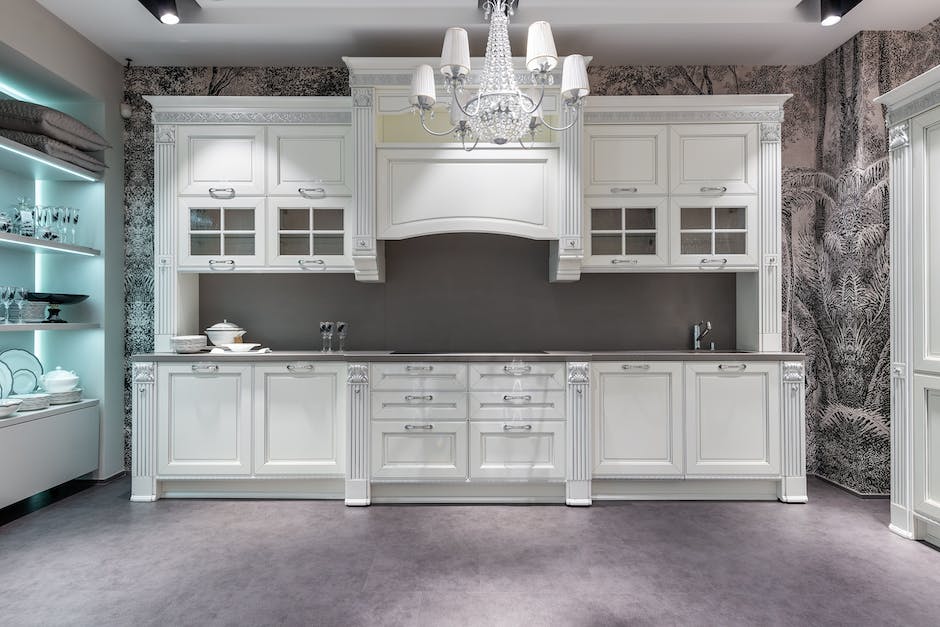
The aesthetic appeal inherent in Scandinavian kitchen design lies in its philosophy: a synthesis of form and function, unobtrusive layouts, and the warm embrace of natural light and organic materials. It is an embodiment of Nordic principles—stripping away the unnecessary, focusing on simplicity, and embracing warmth and light. The blend of classic and contemporary embodied in the layout, furniture, lighting, and decorative elements illuminates individuality within the Korean design scene’s overall minimalist framework. As we continue to evolve and reimagine spaces in our homes, the scandi-style kitchen stands robust, comforting, paradoxically complex in its simplicity, a symbol of timeless beauty intertwined with modern dynamics.

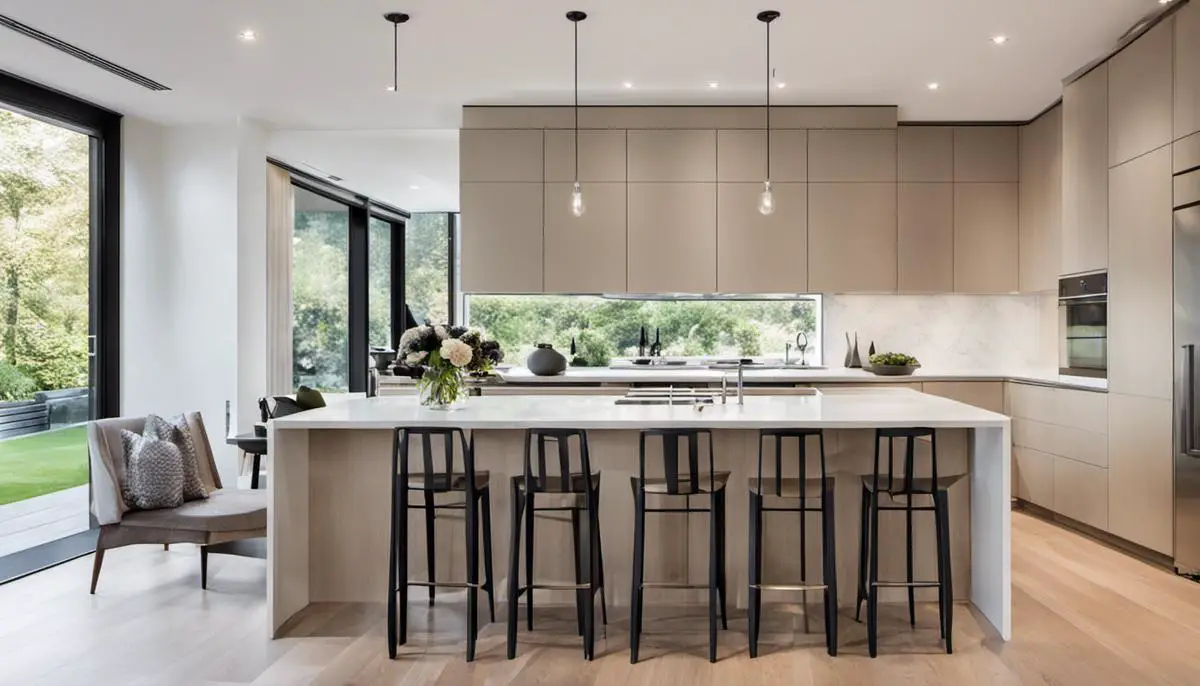
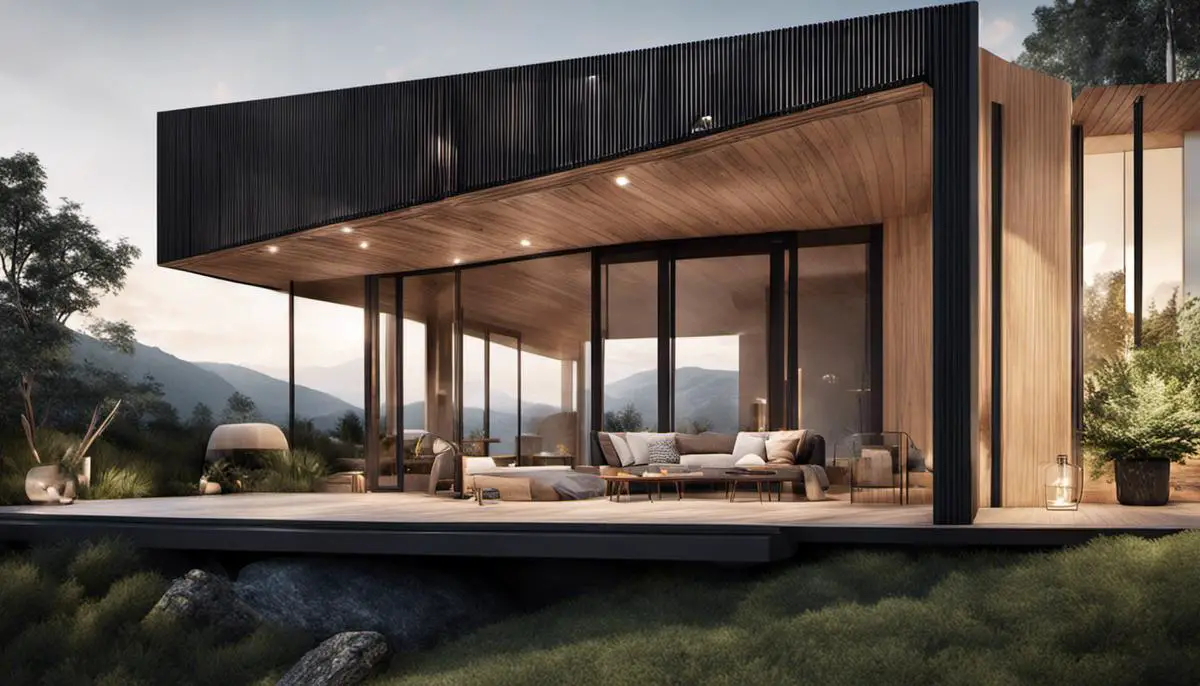
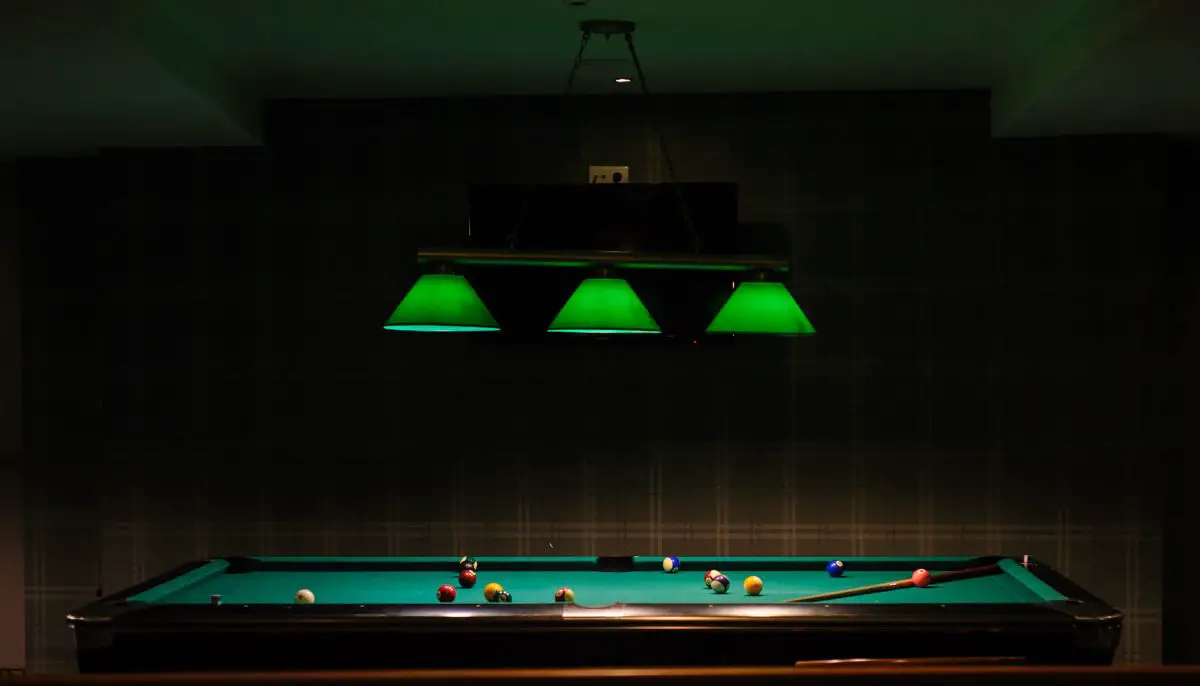
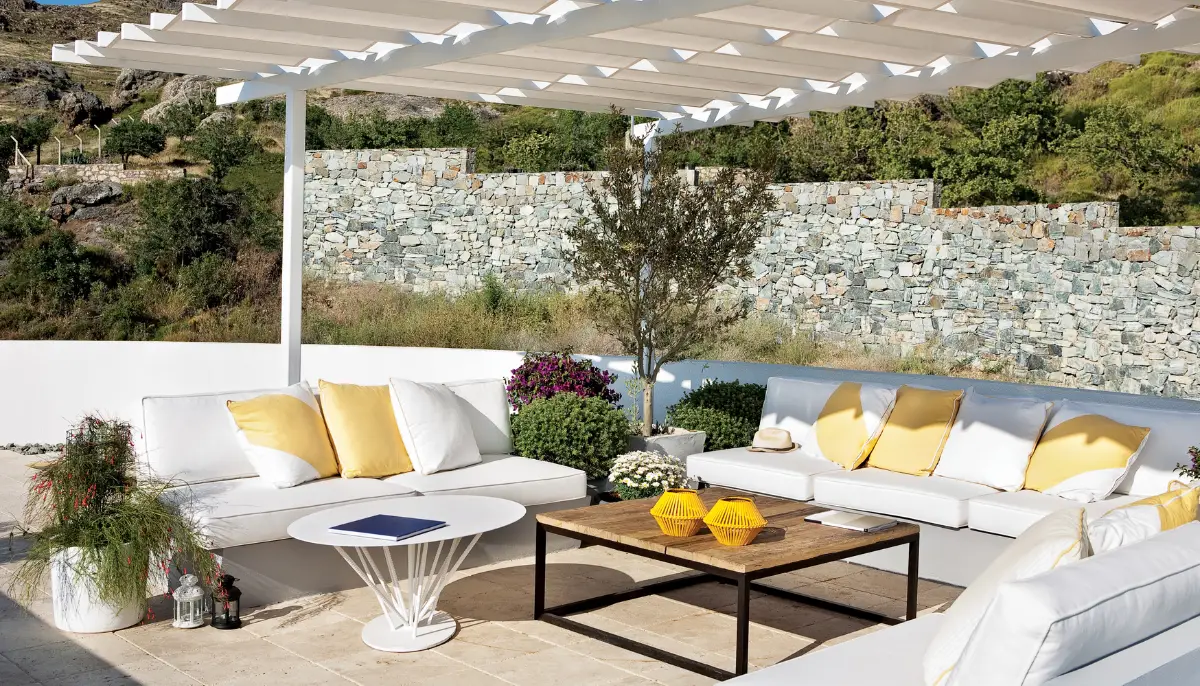
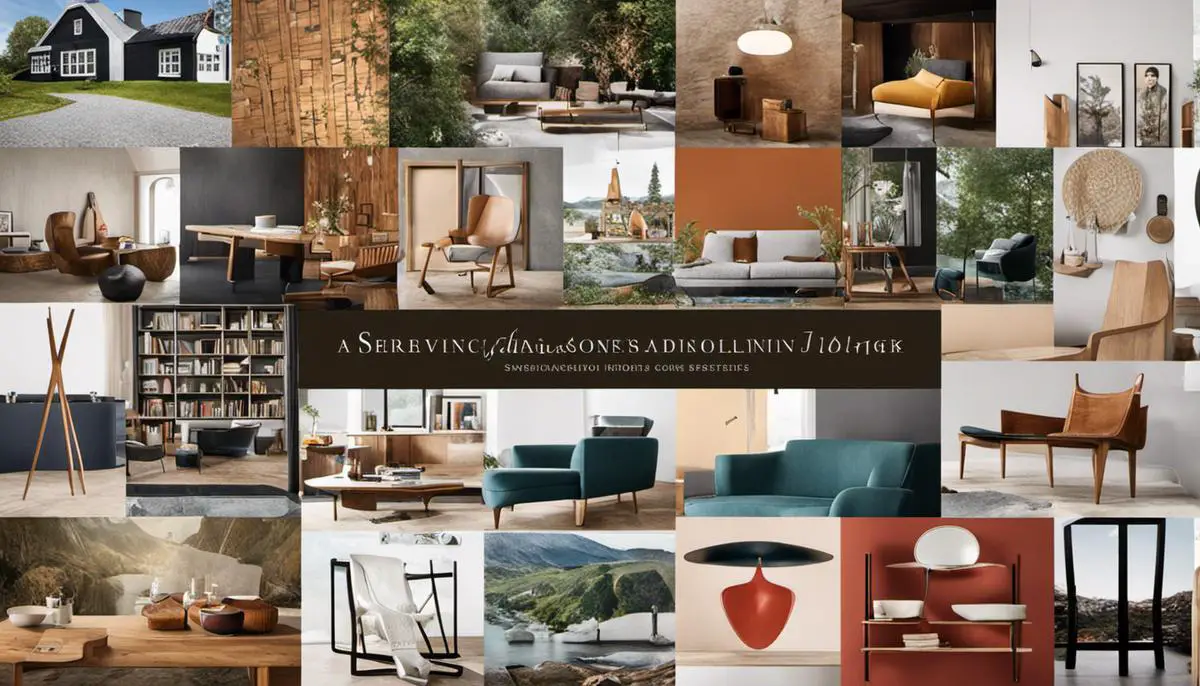
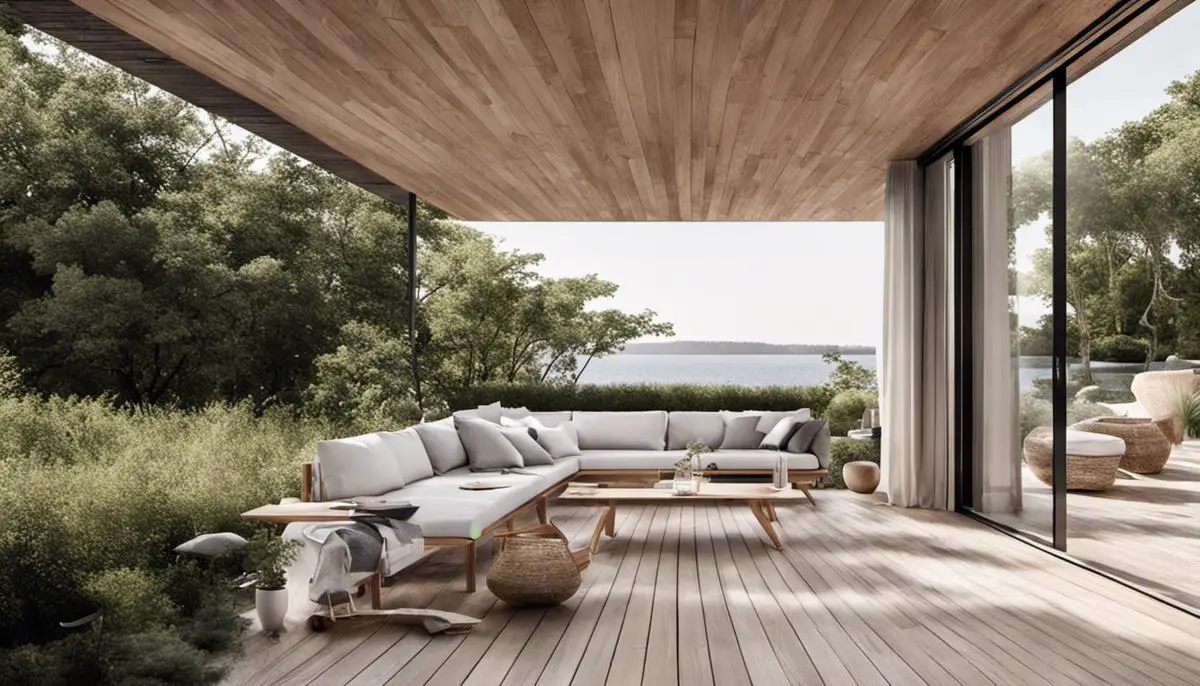
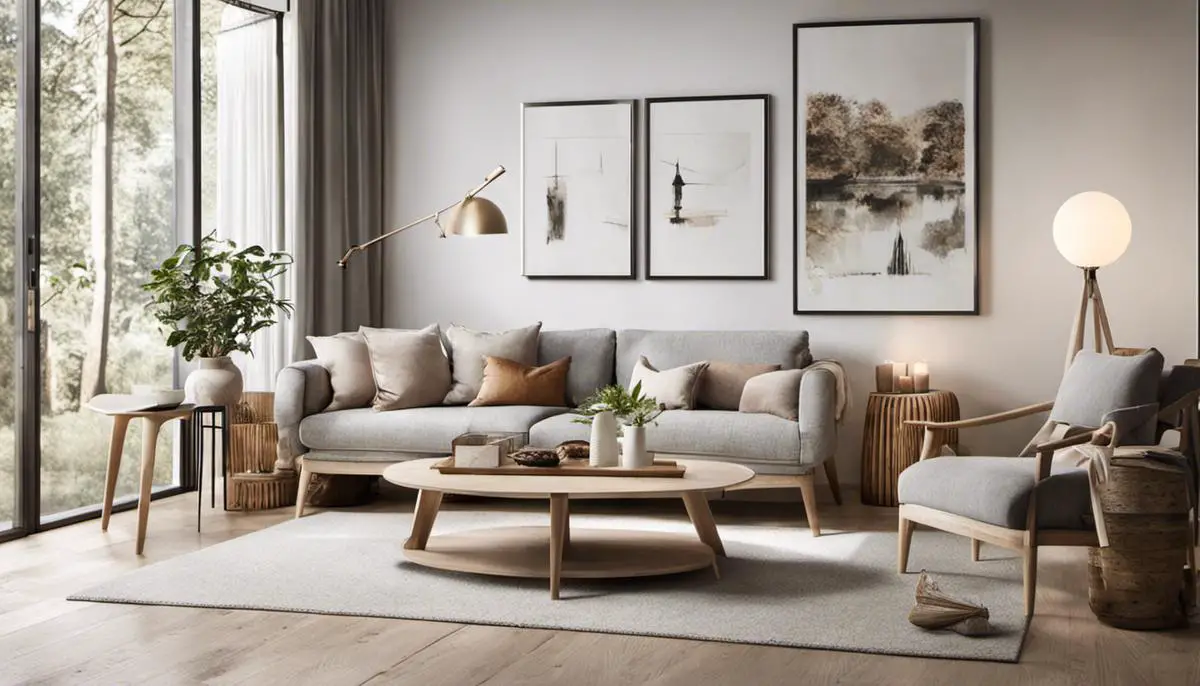
Leave a Reply